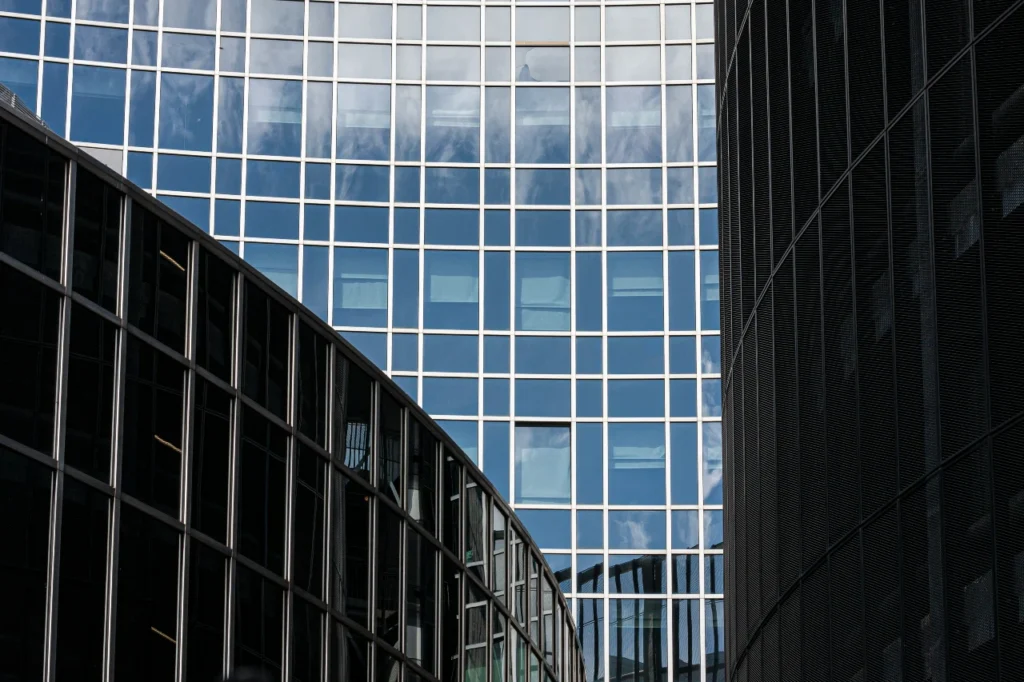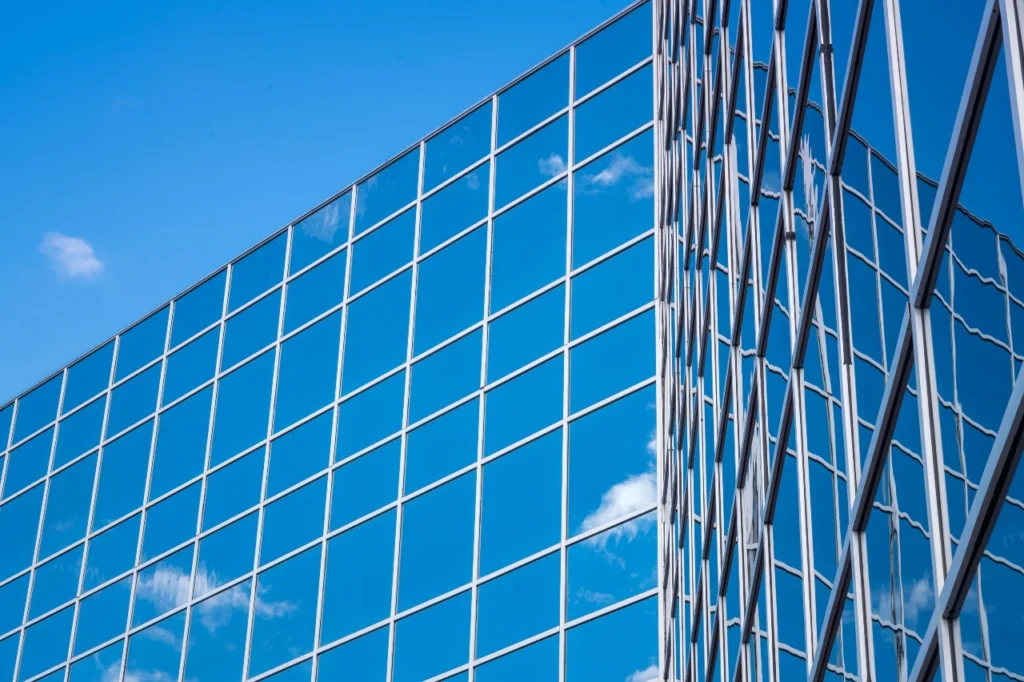



Selecting the right commercial entry door for your business isn’t just about picking something that looks good—it’s about finding a solution that balances security, functionality, aesthetics, and long-term value. Whether you’re installing storefront doors for a retail space or upgrading commercial exterior doors for an office building, making the wrong choice can lead to security issues, energy inefficiency, and costly replacements down the road.
At Nortex Glass, we’ve helped countless businesses across North Texas and Southern Oklahoma choose commercial doors that meet their unique needs. Here are the ten most important factors you should consider before making your decision.
How many people will be walking through your commercial business doors each day? High-traffic locations like retail stores, restaurants, and office buildings need doors built to withstand constant use without breaking down.
For businesses expecting hundreds of customers daily, heavy-duty commercial glass doors with reinforced frames and commercial-grade hardware are essential. Automatic doors might be worth considering for extremely high-volume locations, as they reduce wear and tear while improving accessibility.
Think about peak usage times too. If your business experiences rush periods, your storefront doors need to handle the stress without compromising security or climate control.
Commercial security doors serve as your first line of defense against break-ins and unauthorized access. The level of security you need depends on your business type, location, and what you’re protecting inside.
Consider these security features:
Jewelry stores, pharmacies, and businesses handling cash need maximum security, while general office spaces might require moderate protection. Need help assessing your security needs? Call us at (903) 813-0985 for a professional evaluation.
Your commercial exterior doors have a huge impact on heating and cooling costs. Poorly insulated doors let conditioned air escape, forcing your HVAC system to work harder and driving up utility bills.
Look for these energy-efficient features:
Energy-efficient commercial entry doors might cost more upfront, but they pay for themselves through reduced energy bills. In Texas’s hot summers and unpredictable winters, proper insulation is especially important.
Federal law requires most commercial buildings to provide accessible entrances for people with disabilities. Your storefront doors must meet Americans with Disabilities Act (ADA) standards.
Key ADA requirements include:
Automatic door openers, wide commercial glass doors, and properly positioned handles ensure everyone can enter your business comfortably. Non-compliance can result in lawsuits and fines, so this isn’t optional.
The materials you choose for your commercial doors affect everything from appearance to maintenance requirements.
Aluminum frames are the most popular choice for storefront doors because they’re lightweight, corrosion-resistant, and allow for large glass panels. They work beautifully for retail spaces that want maximum visibility.
Steel frames offer superior security and durability for high-risk locations but are heavier and more expensive.
Glass options range from standard annealed glass to tempered, laminated, and impact-resistant varieties. The right choice depends on your security needs and local building codes.
Check out our portfolio to see how different materials look in real-world commercial applications.
Your commercial entry doors create first impressions. They should reflect your brand identity and complement your building’s architecture.
Modern businesses often choose frameless commercial glass doors for a sleek, contemporary look. Traditional storefronts might prefer doors with visible frames and decorative hardware. Retail locations benefit from maximum glass coverage that showcases merchandise, while professional offices might want privacy with frosted or tinted glass.
Color choices matter too. Anodized or powder-coated finishes let you match your doors to existing signage and branding. The goal is creating a cohesive look that tells customers who you are before they even walk inside.
Some commercial business doors need constant upkeep, while others remain low-maintenance for years. Understanding the difference helps you budget accurately and avoid surprises.
Aluminum frames resist rust and corrosion, requiring only periodic cleaning. Steel doors might need repainting to prevent rust in humid climates. Glass panels need regular cleaning to maintain appearance, but tempered glass is highly scratch-resistant.
Ask potential installers about:
Quality commercial exterior doors from reputable manufacturers can last 20+ years with proper care, making them a worthwhile investment.
North Texas and Southern Oklahoma experience severe weather, including high winds and hail. Your storefront doors must meet local building codes designed to protect against these conditions.
Wind load ratings indicate how much wind pressure a door can withstand without failure. Coastal and high-rise buildings typically need higher ratings than inland, low-rise structures. Hurricane-prone areas require impact-resistant glass that won’t shatter when struck by debris.
Building codes also address fire safety, emergency egress, and structural requirements. Professional installers understand these regulations and ensure compliance. Our team at Nortex Glass stays current on all local codes—learn more about our commercial glass installation services.
Even the best commercial security doors will fail if installed improperly. Poor installation causes air leaks, water infiltration, security vulnerabilities, and premature wear.
Professional installation ensures:
DIY installation or hiring unqualified contractors might save money initially, but often leads to expensive repairs or complete replacement. Work with experienced professionals who specialize in commercial glass doors and can show you examples of their completed projects.
The cheapest commercial entry doors usually aren’t the best value. Smart buyers consider total cost of ownership, which includes purchase price, installation, energy costs, maintenance, and replacement frequency.
A premium door with superior insulation might cost $2,000 more upfront but save $300 annually on energy bills, paying for itself in less than seven years. High-quality commercial exterior doors last decades, while budget options might need replacement in 5-10 years.
Calculate long-term costs by considering:
For help determining the best value for your specific situation, read our guide on choosing the best commercial glass doors for your business.
Choosing commercial business doors requires balancing multiple factors specific to your location, industry, and budget. The right storefront doors enhance security, reduce energy costs, comply with regulations, and create positive first impressions that support your business goals.
Don’t rush this decision. Take time to evaluate your needs, research options, and consult with experienced professionals who understand commercial glass doors and local requirements. The investment you make today in quality commercial security doors will protect your business and customers for many years to come.
Ready to upgrade your commercial entry doors? Contact Nortex Glass at (903) 813-0985 or visit our website to discuss your project. With years of experience serving North Texas and Southern Oklahoma businesses, we’ll help you find the perfect doors for your needs and budget.

Choosing the right commercial entry door is crucial for security, efficiency, and aesthetics. Explore the 10 key factors every North Texas business should consider before installing storefront doors.

Choosing the right windows for a commercial building is key. It affects how well the building works and looks. High-performance …

Discover modern commercial windows that cut energy costs, boost comfort, and enhance building value. Explore Nortex Glass solutions today.